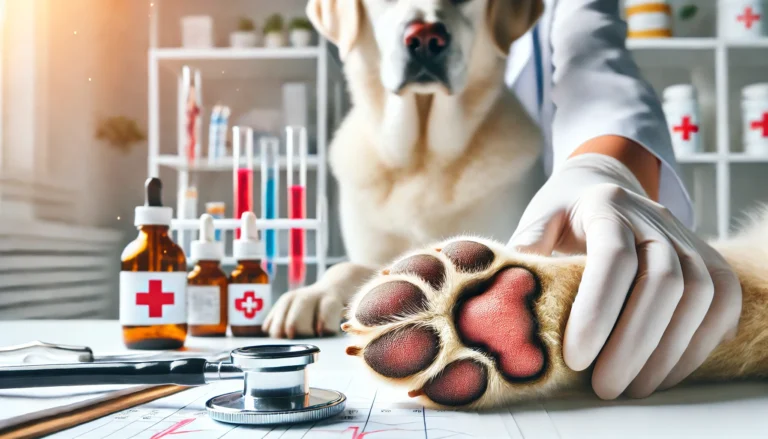Dog Wheezing: Causes and Treatment Options

Introduction to Dog Wheezing
Dog Wheezing may indicate anything from a temporary irritation to a chronic respiratory condition. It’s crucial for dog owners to understand the potential causes and appropriate responses to effectively care for their pets.
Understanding Respiratory Sounds in Dogs
Normal vs. Abnormal Breathing: Distinguishing between healthy respiratory sounds and signs of distress like wheezing, coughing, and other atypical noises.
What Wheezing Indicates in Dogs
Wheezing can be a sign of various underlying issues:
- Allergies: Triggered by environmental allergens such as pollen, dust, or smoke.
- Respiratory Infections: Bacterial or viral infections can lead to inflammation and narrowing of the airways.
- Foreign Bodies: Small objects lodged in the respiratory tract can cause wheezing.
- Chronic Conditions: Such as asthma, bronchitis, or heart disease.
Common Causes of Dog Wheezing
Exploring the most frequent reasons behind why dog wheezing helps in early recognition and treatment.
Environmental and Health-Related Causes
- Inhaled Irritants: Exposure to smoke or chemical fumes.
- Parasitic Infections: Heartworms can cause respiratory distress.
- Breed-Specific Issues: Brachycephalic breeds often experience dog wheezing due to their anatomical structure.
Symptoms Associated with Wheezing
Recognizing accompanying symptoms can guide the diagnosis and urgency of the situation.
- Coughing and Gagging: Often occurs along with wheezing.
- Difficulty Breathing: Noticeable discomfort in breathing, including fast breathing or gasping for air.
- Blue-Tinged Gums: Indicative of oxygen deprivation.

Diagnostic Approach
Effective diagnosis is key to treating in dog wheezing, involving several steps and potential tests.
Veterinary Examination and Tests
- Physical Examination: Checking for signs of respiratory distress and other related symptoms.
- Imaging: X-rays or CT scans to view the lungs and airways.
- Blood Tests: To identify infections, allergies, or other systemic issues.
- Bronchoscopy: Allows a direct look into the airways and collection of samples.
Treatment and Management
Addressing wheezing involves both medical interventions and home care strategies to relieve symptoms and treat the underlying cause.
do you know
Lick Your Face is a behavior exhibited by dogs that can signify affection, curiosity, or even anxiety.
Medical Treatments
- Medications: Bronchodilators, steroids, and antibiotics, depending on the cause.
- Oxygen Therapy: For severe breathing difficulties.
- Surgery: In cases of anatomical abnormalities or to remove obstructions.
Home Care and Prevention
- Reducing Exposure to Irritants: Keeping the air clean and free from smoke, dust, and chemical vapors.
- Humidifiers: Can help in easing breathing in dry environments.
- Regular Veterinary Check-ups: Ensuring chronic conditions are managed and potential issues are caught early.
When to Seek Emergency Care
Understanding when dog wheezing signifies a crisis is crucial for the immediate well-being of your dog.
- Persistent Dog Wheezing: Wheezing that doesn’t stop with usual treatments.
- Severe Respiratory Distress: If the dog appears to struggle to breathe or is lethargic.
- Behavioral Changes: Such as increased agitation or reluctance to move.
Conclusion
Wheezing in dogs is a symptom that should never be ignored. With the right knowledge and timely action, most causes of wheezing can be effectively managed or treated. Always consult with a veterinarian when your dog shows signs of respiratory distress to ensure the best care and outcome.
Should I be worried if my Dog Wheezing?
Yes, wheezing can indicate underlying health issues; it’s best to consult a veterinarian.
Why is my dog making a weird breathing noise?
This could be due to respiratory issues, obstructions, or breed-specific traits. A vet check is advisable.
Why is my dog huffing like he can’t breathe?
Huffing can signal respiratory distress, overheating, or a cardiac issue; seek immediate veterinary care.
Is it normal for dogs to wheeze in their sleep?
Occasional wheezing might be normal, but regular wheezing, especially if severe, requires veterinary attention.
How do you treat wheezing in dogs?
Treatment depends on the cause but may include medications like bronchodilators, steroids, or antibiotics, as well as managing environmental factors.
How to calm a dog’s breathing?
Keep the dog cool and quiet, reduce stress, and if the breathing doesn’t normalize, consult a vet.
What home remedy is good for dogs breathing problems?
Humidifiers can help in dry environments, and ensuring a clean, smoke-free area is beneficial. However, persistent problems should be evaluated by a vet.
What are signs of anxiety in dogs?
Signs include excessive barking, pacing, trembling, licking, and avoidance behaviors.
What position helps a dog breathe better?
Elevating your dog’s head and chest can help, as does placing them in a sternal recumbency position (lying on their chest) to facilitate easier breathing.






